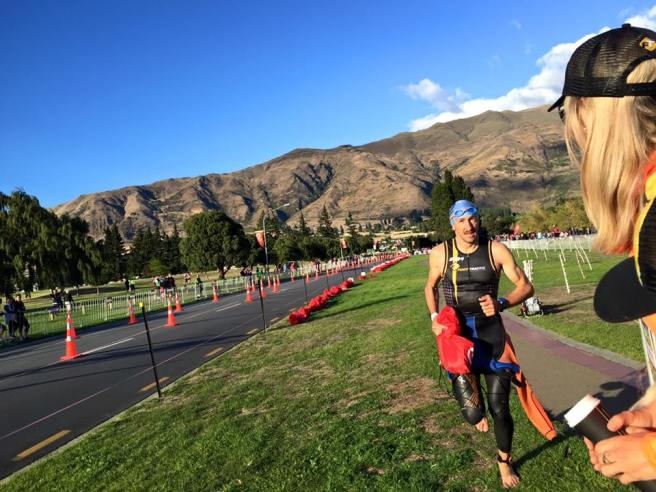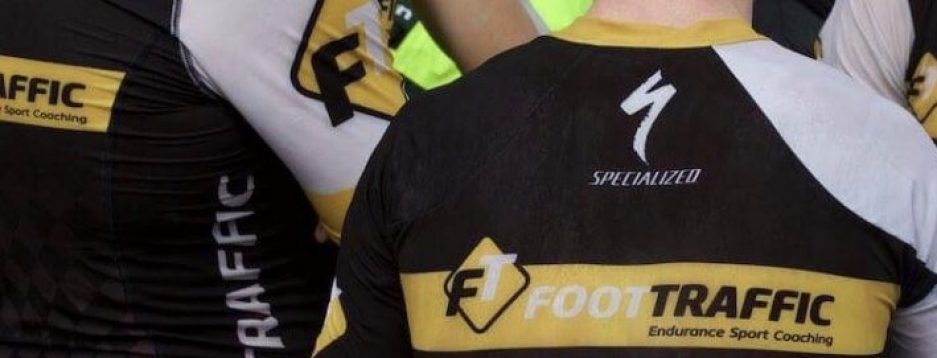In 25 years of participating in Triathlon I don’t think I have ever experienced a Panic Attack. I always thought I was one of the lucky ones. Well in Challenge Wanaka last month that changed for me. Challenge Wanaka is a great, friendly little race in a spectacular location, but boy it tested me physically and mentally.
Since the race I have had a chance to go over a few things surrounding the attack, and what I think led to it. I have also thought of a few ways I can prevent them from happening again in the future, so hopefully sharing will give others some ideas on how to combat it.
The morning of Challenge Wanaka was a pretty relaxed affair (Problem #1) and for some reason I had a fairly light breakfast compared to what I would normally have before an Irondistance event (Problem #2). Due to the strong winds across the lake that morning the swim turn buoys had been blown off course so they were forced to delay the start by 15 minutes, however I think it was actually longer than that by the time we got going (Problem #3). I had a few puffs of my Ventolin inhaler as I have found in cooler temps that I can get a bit wheezy and restricted in my breathing (Problem #4). Due to the cooler air temperature and strong wind potentially making me even cooler, despite being in a wetsuit, I opted not to go for a swim warmup, but instead to do a dry-land warm, which I something I have done plenty of times before (Problem #5). I lined myself up in a good spot on the startline and was planning to swim the first 600m to the turn can a bit easier to effectively finish my warmup (Not really a problem, I still think this was a good idea). As soon as the gun went I was straight into it, dove into the first wave and got swimming. Some stage soon after the start I took on a massive mouthful of cold water, most of which it felt went straight down my windpipe (Problem #6). I started panicking and soon after my heart rate hit the roof, I lost all feeling in my arms and legs and I couldn’t lift my head to breath without taking on more water or getting whacked on the head by a swimmer behind me (Problem #7). I was moving forward, but no matter how hard I tried I couldn’t find myself and I seriously thought my race was over.

I hadn’t even made it to the first intermediate marker buoy which was set only about 100m off the beach. I was certain people would be watching this seemingly unprepared athlete flailing around like he had entered a race far out of his depth. I rolled onto my back and I the beach was right there, beckoning me to swim back and pull out, but I was determined to not do that. I rolled back over and tried again, which resulted in the same outcome. This second time I snuck a quick look at my Polar watch and my Heart Rate was sitting at 170something, which is very high for swimming. I started to swim again, but still couldn’t settle down. This time the rescue kayak started moving towards me and I was happy about that as they were going to get me out of the water and take me safely to the beach. I checked my watch again and could see I had been going for 3mins! What the hell, how could this still be happening, I was the last swimmer now.

I started to compose myself a bit more and decided I would wave away the rescue kayak and try doing a mix of side stroke and breast stroke so I could avoid putting my head in the water. I was finally moving forward, so I decided to just try and make it to the first turning buoy as I knew once around there the wind would be behind me and it would be a lot more controllable. I started passing a few people so I made sure I was in my own water as I didn’t want to swim into anyone. I finally got around the buoy and everything settled down – it was like nothing had even gone wrong. I swam past one of my athletes (Anna Lorimer) about 3/4 of the way through the lap and I knew she was swimming well so I figured I wasn’t going too badly. The second lap was business as usual. When I got out of the water I had swum 59:49, which really surprised me. If I didn’t have this issue it would have been a great swim.

So why did the problems I identified earlier happen at all? There was nothing about this swim that I wouldn’t normally happily get through. This is what I have figured out….
- I was probably too relaxed. I hadn’t raced an Irondistance event for a couple years and I didn’t put enough emphasis on the mental preparation. This would have affected a lot of the things that occurred.
- Yeah, just a Bagel with Nutella and a coffee is not a good breakfast before an Irondistance race. Especially when the race start is over 3 hours away. I would normally have a Bagel, 3 eggs, a bit of bacon and a coffee.
- The delay meant it was even longer without food, and trying to stay warm probably burnt a bit of energy
- One of the less common side-effects of Ventolin is an increased Heart Rate. I haven’t had symptoms of Asthma for some time now, but for some reason I thought it wise to take it as a precaution. This wasn’t necessary at all.
- Not having a good warm up meant my engine wasn’t running hot and my heart rate hadn’t really been elevated at all, apart from a short jog earlier in the morning. I’m a slow starter at best, and it takes me a good KM to get into my rhythm, so I should have gone for a short swim just prior to the start.
- My throat and lungs wouldn’t have been used to the cold water and therefore constricted as a reaction, limiting the breathing. In future I would have a cold drink shortly prior to the start to simulate the temperature of the water I will probably be drinking a few minutes later.
- I often get a rapid increase in Heart Rate in times of extreme stress, and this leaves my arms and legs feeling dead. The only way I have been able to settle it in the past has been to stop moving, relax for a few minutes and get moving again. This is what I was trying to do, but it was getting a bit difficult to manage.
So I learnt a really good lesson, and I was keen to not let this happen again, especially at Ironman New Zealand which was coming up 2 weeks after this race. And seeing as I am writing this a few days after IMNZ I am happy to report that I addressed all the issues above prior to the race, did not have a repeat of the panic attack. So I hope this isn’t something I will encounter again.
If you have been reading this and do suffer from panic attacks then work through some of the processors that have lead to them in the past and see if you can find a way around them. The thing is when you are panicking all rational thought leaves the room and it becomes very hard to deal with it. So if you are able to work on these skills in training or smaller races then you will find come the big ones that you are better armed to cope, and won’t go straight to the pull out option.
I’m happy to say I finished Challenge Wanaka in 10:43, a long way off what I was hoping to do, however as you would expect with a name like that there were a few other challenges along the way, which I will no doubt write about another time, so you can look forward to that.
If you are interested in employing a Triathlon Coach for your next key event feel free to get in touch with me. At Foot Traffic Coaching we have various levels of Training Plans and have the experience to help guide you to your goals.
http://foottrafficcoaching.com/contact




Have had the same attack in the same lake! Something about that fresh water!
LikeLike
Not on your Rob, I swim 53 mins and still get them almost every race. Swim ability has nothing to do with it. Mine are not anything to do with temp or nutrition but claustophobia and not being able to see where I’m going. Happens in crystal clear, mill pond water when I’m on my own or in a dirty, windy lake with 1000 others. Keep on trucking.
LikeLike
Rob I do not believe that increase of heart rate caused numbing feeling in your extremities. As an exercise technologist, I believe it was rapid breathing. In the future take control of your breathing and you will control your panicked attacks. Hope this helps.
LikeLike
I had a similar experience at IM Mont Tremblant last August. 5 minutes into the swim I thought I was done. I couldn’t catch my breath. I finally found a raft and watched the entire wave behind me swim past. Once I could breath again, I got into a good rhythm for the rest of the swim and had a good day overall. Scary experience!
LikeLike
That sounds very familiar!
IM Mont Tremblant eh….now that’s a race I would love to do one day.
LikeLike
My first sprint tri was EXACTLY like that! Stopped on a kayak for a few and kinda side stroked and dog paddled my way through…but i finished. It was ugly but done. Haven’t had that happen since, but warm up in the water every race now.
LikeLike
It sounds like you have sorted that out now.
Well done
LikeLike
Great work and I enjoyed reading your article…
#6 is a common nemesis. Even if you can’t get in a practice swim it’s important to acclimate your system to water temp. Living in the way northern hemisphere a trick used here is to turn your head sideways and slowly put your head into the water (before the race). Don’t need to submerge your head much just enough to give your body a chance to prepare for the cold plunge.
Since using this technique (when I can’t get a practice swim in) I have been able to get into a rythem much faster during the swim.
LikeLike
That’s a great tip. I like it! Next time I am swimming in cold water I’ll be doing that for sure.
Cheers
LikeLike
Was likely the stash! Nice article rob happened to me a couple of time’s since moving to Canada. Probably lack for me of pushing super agressivley in training to get used to the firest 300 where trying to catch feet is so important. Good to see you recovered from it.
LikeLike